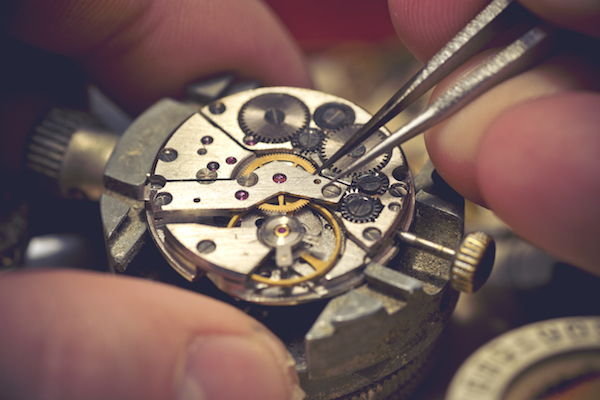

Today, VisionFirst is addressing a common question our doctors receive from patients… What is the difference between a lens, cornea, and retina? Our favorite analogy to use when answering this question is comparing the eye to the glass, face, and inner workings of a watch. Together, the cornea, lens, and retina make up a necessary team to keep the eye functioning and stable.
The cornea | The glass covering of the watch
The cornea acts as the protective outer layer that keeps anything from getting in and disrupting what’s under the surface. This is where light easily passes through. When the cornea gets scratched or damaged, the images we see become unclear and distorted. When the cornea is impacted, the rest of the eye won’t be able to function properly. It can also be very painful.
The cornea is made up of protein and cells and has five different layers: the epithelium, Bowman’s layer, the stroma, Descemet’s membrane, and the endothelium. The first layer, called the epithelium, contains a bunch of cells that cover the cornea. It helps protect the eye from anything entering it from the outside and is the source of the cornea’s nutrients.
The lens | The face of the watch
The lens is like the face of the watch. It focuses and transmits the images that we see to the retina. These images are then projected to the brain via the optic nerve, becoming a reality. As you grow older, your lens will begin to weaken, which is why most people eventually need glasses to help them read and/or see.
The lens lies behind the pupil and iris. The lens changes its shape in order to change what the eye is focusing on. Whatever light rays go through the lens become focused, so that your brain receives clear images of objects that are located at different distances. Diseases that can affect the lens include, but are not limited to, cataracts, nuclear sclerosis, and presbyopia.
The retina | The inner workings of the watch
The retina is similar to the cogs and wheels spinning behind the scenes. Whenever one of these wheels (or arteries) are blocked, serious damage occurs to the rest of the eye and can cause it to stop working properly, if at all. This is the part of the eye that is sensitive to light.
The retina lines the back of the eye and contains photoreceptor cells that act as color and light detectives. One condition that can affect the retina is retinal detachment. This is where the retina becomes detached from where it usually lies, which prevents it from receiving or processing light rays. This can potentially lead to blindness.
The doctors at VisionFirst are always here to answer any questions you have and to help patients understand the basics of eye health. Their goal is to make sure you leave SEEING, LOOKING, and FEELING your best! Make an appointment at one of our 14 area locations today.